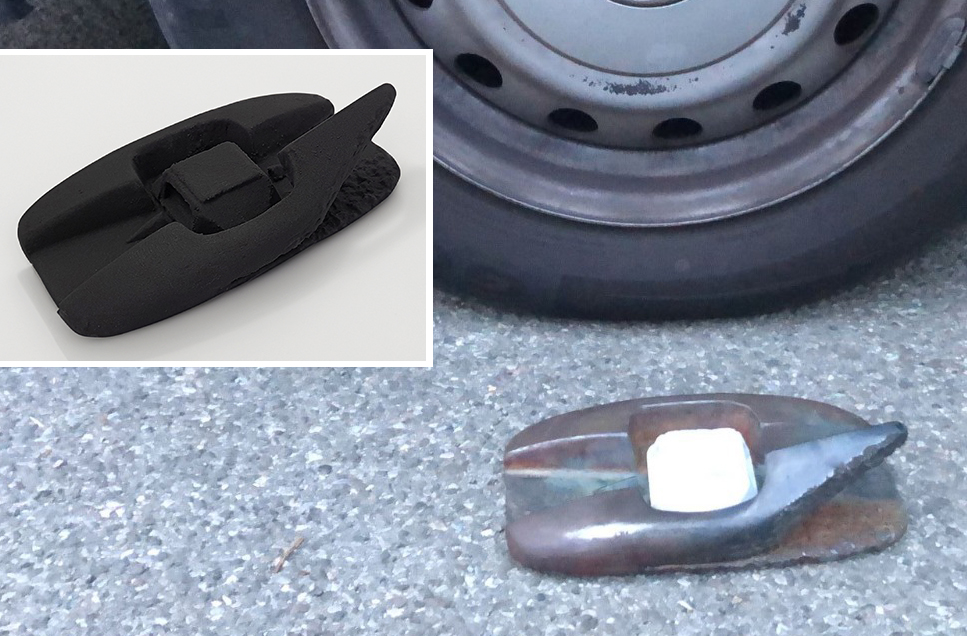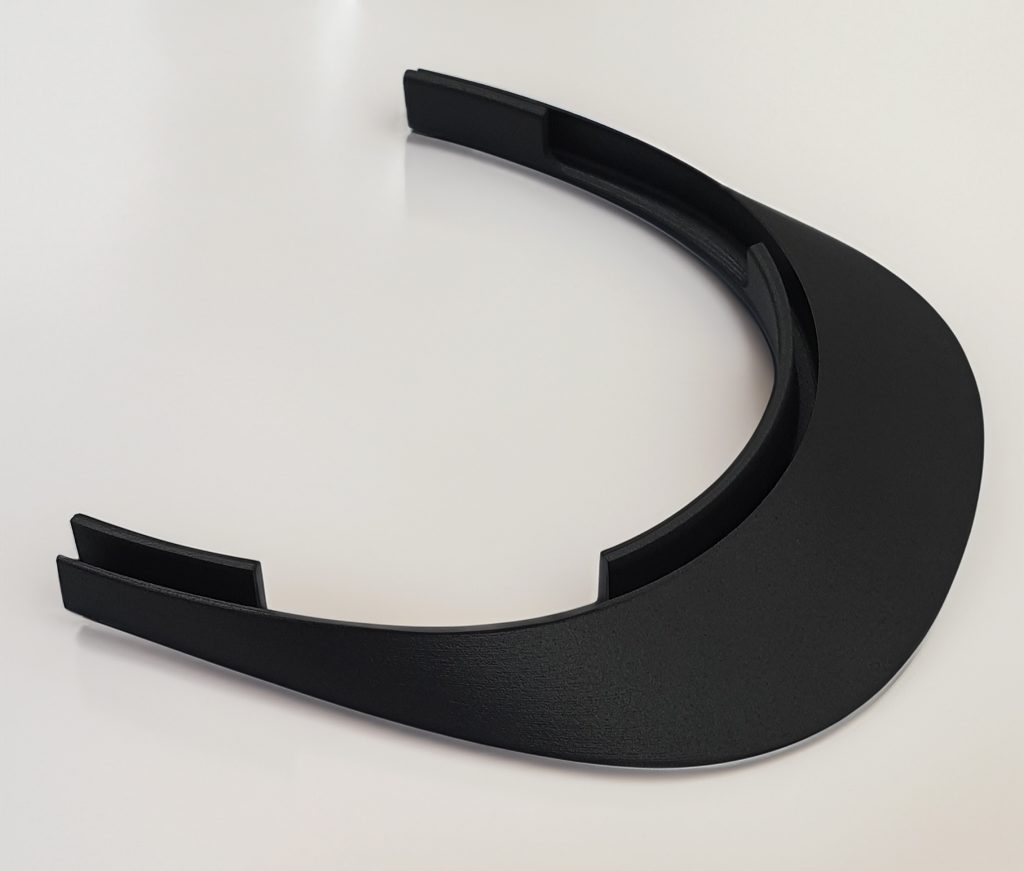Italy-based 3D printing company CRP Technology partnered with Michael Mann’s film production team to craft 3D printed components for the upcoming movie, Ferrari.
Derived from Brock Yates’ pivotal 1991 biography, “Enzo Ferrari: The Man and the Machine,” Mann’s latest film, “Ferrari,” meticulously delves into the visionary Italian luminary’s impact on automotive engineering and motorsport history. Scheduled for a worldwide release on December 25th, and already released in Italy on December 14th, this movie presents a comprehensive portrayal of Enzo Ferrari’s enduring influence.
The 3D printed components, including driver helmet parts, pit elements, and cat’s eyes, were manufactured using CRP Technology’s Windform materials and Selective Laser Sintering (SLS). Commissioned during the filming in Modena, these props played a role in enhancing the visual narrative of Enzo Ferrari’s world.

Fueling creativity with 3D printing
Adapting 3D components to the story’s needs involved adjusting their mathematical parameters to seamlessly integrate into scenes, meeting specific requirements. Commissioned during active filming in Modena, CRP Technology received the task with an immediate on-set usage demand in both Modena and northern Italy. The efficient delivery of the required 3D printed parts within a short timeframe, thanks to CRP Technology’s highly skilled staff, ensured strict adherence to the demanding shooting schedule.
Demonstrating the versatility of CRP Technology’s Windform composites, these 3D printed props showcase their adaptability, says the company. Over the years, Windform materials have been integral in advanced industrial sectors like motorsport, aerospace, and unmanned aerial vehicles (UAV). Now, they are proving equally suitable for high-performance cinematic props. Specifically, Windform XT 2.0, chosen for pit parts, Windform GT for the visor, and the rubber-like Windform RL for the cat’s eye, stand out due to their exceptional mechanical properties.
Expressing contentment with CRP Technology’s contribution, the film production team praised the company for its availability, efficient production, and timely deliveries. They also commended the quality of the 3D printed components, underscoring CRP Technology’s commitment to delivering effective solutions.

CRP Technology’s Windform materials recently found application in USABS’s novel bobsled design for the upcoming 2026 Olympic Winter Games. Partnering with the USA Bobsled/Skeleton team (USABS), CRP USA played a crucial role in supplying 3D printed functional parts tailored for racing bobsleds. This collaboration streamlined manufacturing, cutting the need for molds and enabling swift production of crucial bobsled components like push handles, hand grips, and seats. Windform materials, including XT 2.0 and SP, proved effective in meeting regulations for optimal bobsled performance and athlete safety.
Has 3D printing ever entertained before?
Director Guillermo del Toro’s Netflix stop-motion film Pinocchio employed 3D printing for character heads, departing from traditional clay molding. The mechanical heads, fitted with silicone skin, allowed animators greater control over emotions and natural movements. Lead puppet maker Richard Pickersgill introduced 3D printing to overcome challenges in creating intricate puppets, resulting in a realistic Pinocchio model with a 3D printed torso and metal joints.
In 2019, Adam Savage, former MythBusters co-host, unveiled his 3D printed Iron Man suit on the TV series Savage Builds. Developed since San Diego Comic Con 2017, the titanium suit was a collaborative effort involving the Colorado School of Mines, EOS, Lithoz, Legacy Effects, and Gravity, known for the “Real Life Iron Man.” Built with 250 lightweight titanium pieces, the suit, designed with Marvel‘s permission, integrates a ceramic 3D-printed arc reactor from Lithoz. The final episode showcased the suit’s creation and a flight demo using Gravity’s arm-mounted thrust engines.
Read all the 3D Printing Industry coverage from Formnext 2023.
What does the future of 3D printing for the next ten years hold?
What engineering challenges will need to be tackled in the additive manufacturing sector in the coming decade?
To stay up to date with the latest 3D printing news, don’t forget to subscribe to the 3D Printing Industry newsletter or follow us on Twitter, or like our page on Facebook.
While you’re here, why not subscribe to our Youtube channel? Featuring discussion, debriefs, video shorts, and webinar replays.
Are you looking for a job in the additive manufacturing industry? Visit 3D Printing Jobs for a selection of roles in the industry.
Featured image shows 3D printed visor for helmet in Glass fiber reinforced composite Windform GT, assembly test (on left) and helmet built, on the scene on actor and dummy (on the right). Photo via Prop On-Set Team.


